Insulating single-glazed windows in period homes is a good idea when the weather gets colder. You can keep the heat in by insulating your windows and lowering your heating costs. You also don’t have to deal with a cold draft as you wake up in the morning, something that every home member will greatly appreciate.
But how do you insulate your single glazed windows? Well, you have several options for insulating windows. Many of these insulation techniques are simple and cheap; others are more costly but much more long-term.
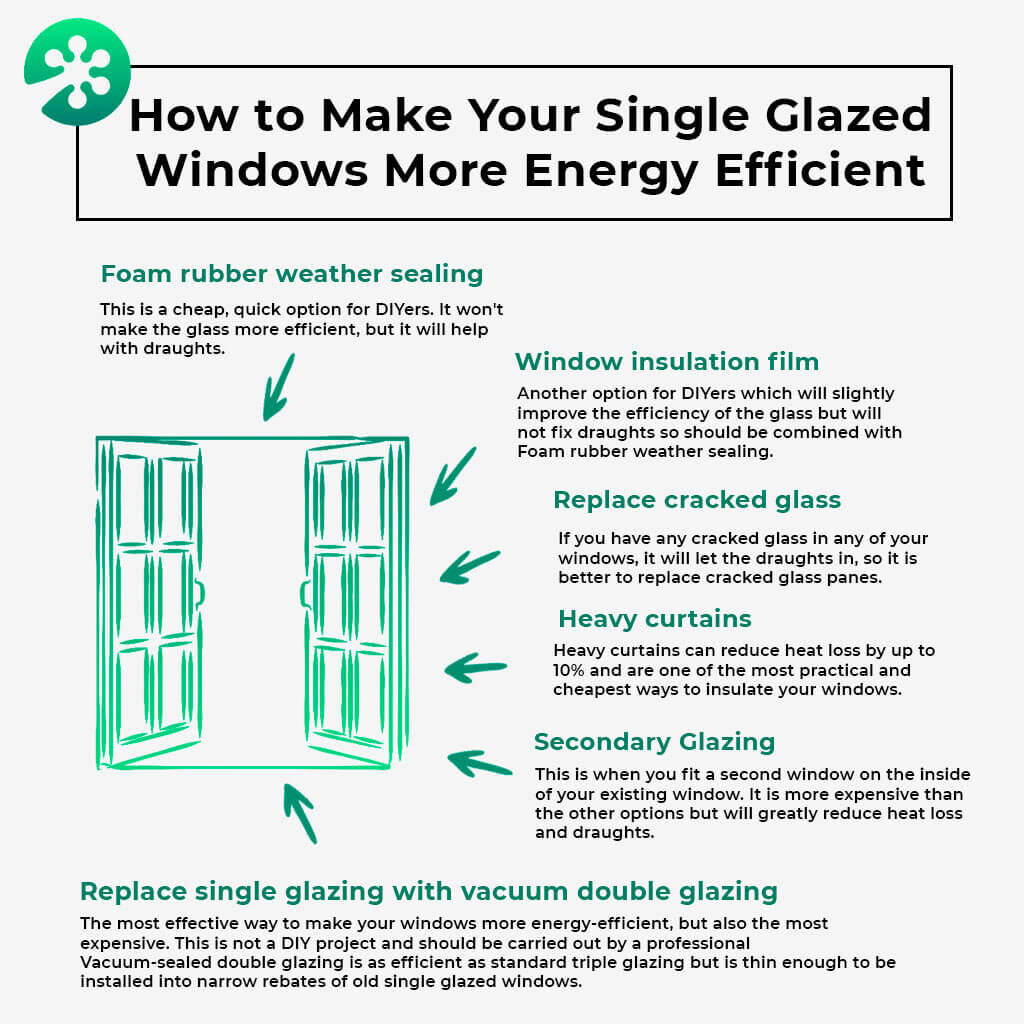
Before we get to insulating techniques for windows, let’s first find out how to check your windows. Some of your windows may not need any insulation, while others may need several solutions.
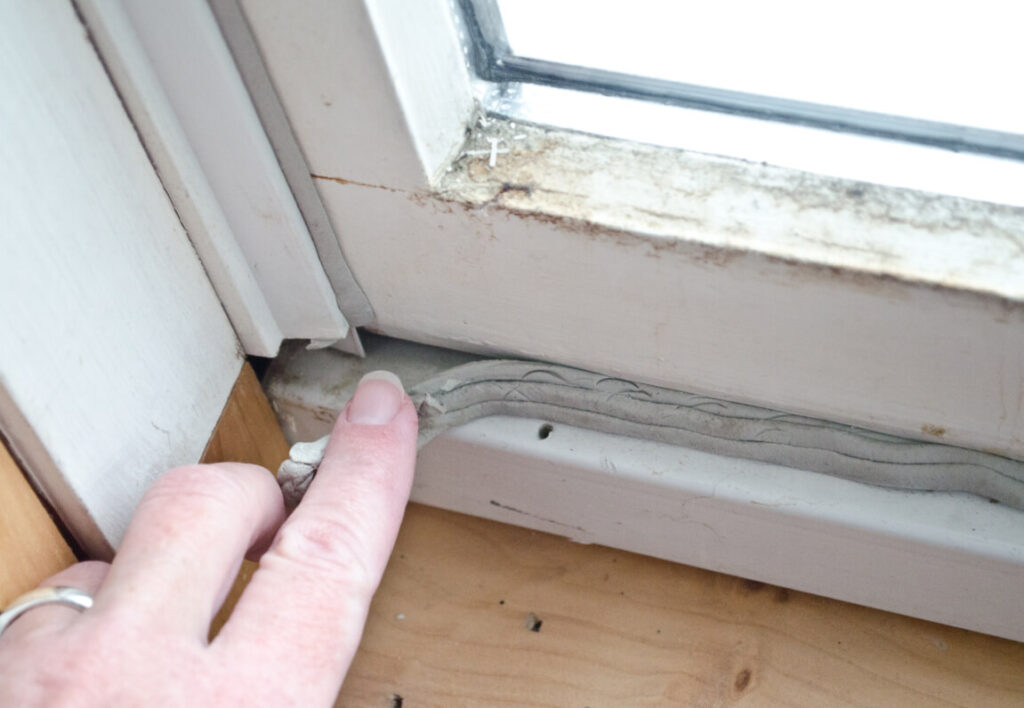
There are several very simple ways of checking which of your windows need to be insulated:
The feel test is as simple as running your hand around the window frame to feel for any air that is getting in. It’s usually easier to feel the air on a windy or cold day. If you can feel the air coming through the window frame, you will need to insulate that window. Pro tip: dip your finger in water before running it along with the frame. This will make your finger much more sensitive to the cold air and help you detect any drafts more easily.
Light checks can be done on a sunny day, or you can use a torch. Of course, using a torch can be tricky if the windows are upstairs, but if you have a brave companion to help, put them to work. The idea is simple; if light shines through the window frame, it must be insulated. This is the trickiest method of all three, but it can help if you have a sunny day or a brave friend!
If you don’t have a brave friend, the weather isn’t hot or cold; you can use the smoke test. Light a candle and make your way around the window frame. If the smoke from the candle is sucked into the frame, or you notice that it dramatically changes direction, there is a hole that will need to be filled. People also use incense sticks for this as they give off a bit more smoke.
Take your time, and you should be able to identify which of your windows need to be insulated with these three methods. Now let’s find out how to insulate your windows, shall we?
There are several short-term ways to insulate your windows over the colder months. These will likely only last one winter, and most will make the windows unusable during that time. They are, however, cost-effective solutions and very simple to do without too much DIY knowledge.
So, these insulation methods can, at least, see you through your first winter in a period home. After that, it is worth looking into the longer-term insulation solutions below this section.
This self-adhesive tape will stick directly to your window frame and provide a nice seal. It is very simple to apply, and if you’re careful, you may still be able to use your window after applying it. This tape won’t eliminate all draughts, but it will do a fairly good job.
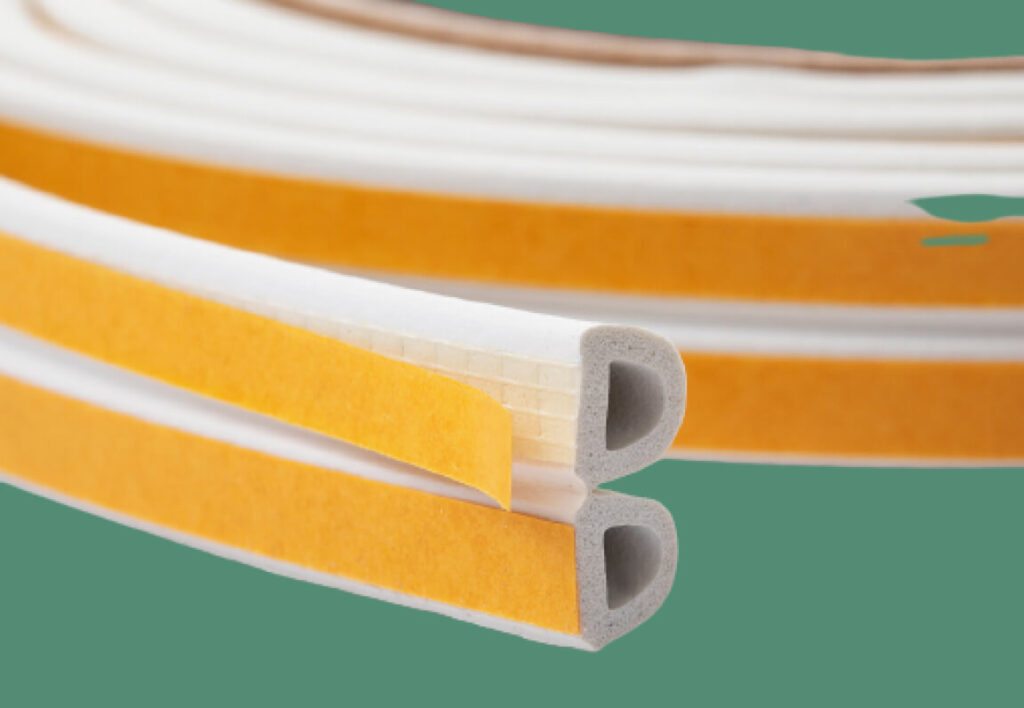
The window glass and frame must be very clean for this method to work. So, give it a wipe down with a damp cloth, and ensure the window is completely dry before sticking the weather sealing tape down. Some homeowners have experienced peeling paint while removing this tape, so be very careful when removing it.
If you have cracks in your window, you can use weather-seal tape to seal them and ensure they won’t get bigger with storms and rain. Weather-seal tape is widely available and will last a good few months to prevent air from getting in the cracks’ gaps.
You can use nail polish to fill in the crack too. Clear is best unless you want to get funky! This works extremely well, but you do need a few coats of nail polish on each crack. If you take your time with the nail polish, you’ll never even notice it was there. The nail polish will wear away in a few months, though.
Both of these methods are temporary, of course. If your window does have a crack, it does need to be repaired and will continue to get worse if it isn’t repaired. Still, these little hacks could get you through the winter.
You can use window insulation film to keep cold air out and the lovely warm air in. Most DIY stores carry this window film, and it is inexpensive. To install the window film, simply cut it to size and then use double-sided tape to secure it to the glass of your window. To seal the window film properly, you can use a hairdryer. This will shape the film to the glass and prove a good seal between them.
While window film is a very good option, it can be tricky to get during the winter months. If you’re starting your insulation party late, you can use bubble wrap as an alternative. Surprisingly, bubble wrap works just as well as the insulation film and is applied to the window in exactly the same way. If you can, go for the bubble wrap with the larger bubbles. This tends to insulate better than small bubbled bubble wrap.
To remove both, you can simply peel away the tape. Of course, the tape may leave behind some stickiness, but that can be cleaned with alcohol or a degreaser. Occasionally, bubble wrap can leave a stain behind, but this is very rare. Window film doesn’t tend to leave anything behind. Of course, both will block some light from entering the home, but this is one of the best short term insulation solutions for windows that we’ve found.
Curtains or blinds? How about both? Doubling up is a great way of insulating your home and blocking draughts from getting anywhere near you. We would recommend using this solution in conjunction with another solution on this list as it doesn’t actually insulate your windows for winter but creates a barrier. By having blinds and curtains (thermal curtains and cellular shades are the best choices for this), you can also eliminate the cool air from reaching you. However, it will still enter your home, which can potentially lead to damp and mould issues in the spring.
If you’re lucky, the short-term insulation solutions for the windows above will see you through one winter. After that, you may have to clean up some sticking residue or enjoy your new blind and curtain combo. There are some long-term solutions available, though. Granted, these are a bit pricer, but once these insulation solutions are installed, you’ll never need to worry again.
Secondary glazing is the second panel of glass installed into the window of period homes to keep draughts to a minimum. These can work very well for draughts but will not eliminate the problem.
This means that if your window does have a draught, it will still have the draught after the secondary glazing is installed, but the second glass panel will block it from entering the home. This can cause mould and damp issues, just like some of the shorter-term solutions above.
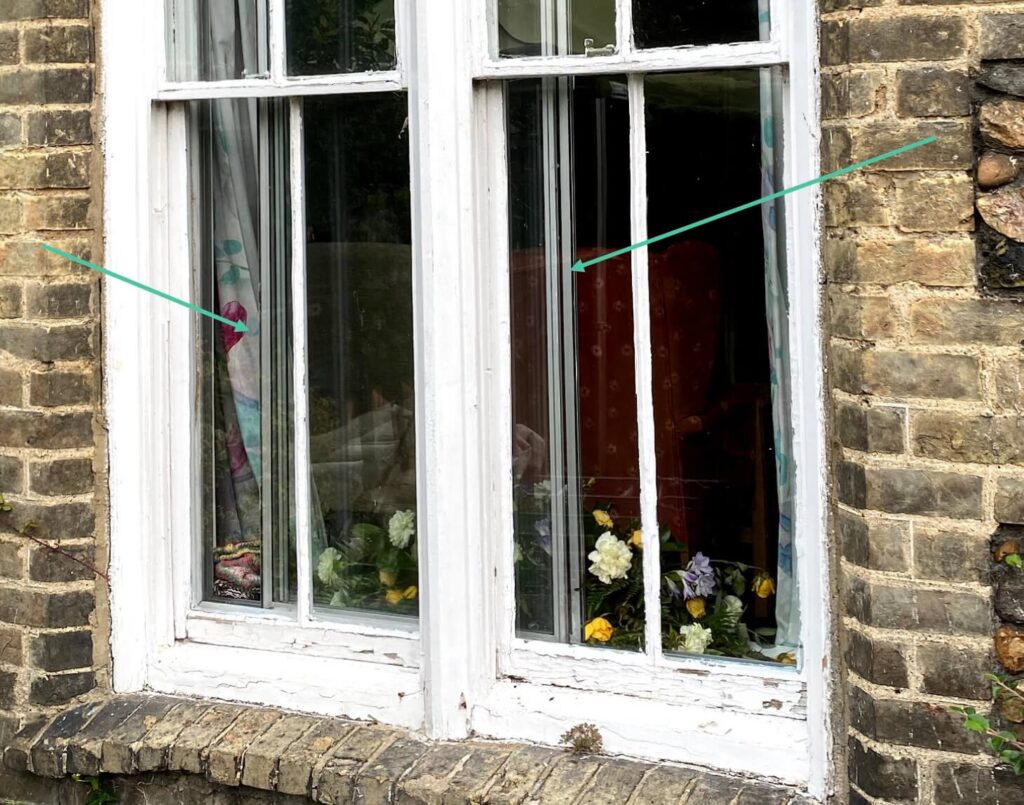
While secondary glazing is a good option, it doesn’t do the job completely. It can also make your windows a bit unsightly, putting many homeowners off the idea altogether. This is why Chameleon doesn’t offer secondary glazing services; we think there is a better way.
Chameleon offers double glazing services that take advantage of vacuum-sealed technology. Vacuum double glazing is so good that it performs as well as gas-filled, standard triple glazing but is thin enough to be installed into narrow rebates of older windows, such as slimline double glazing. For period homes, this is perfect.
Chameleon can install this double glazing into existing window frames, so there is no style or character change.
We can also completely draught-proof all of your windows while we do it, so they are insulated and draught-proof. No more cold winter air and no more noise, either.
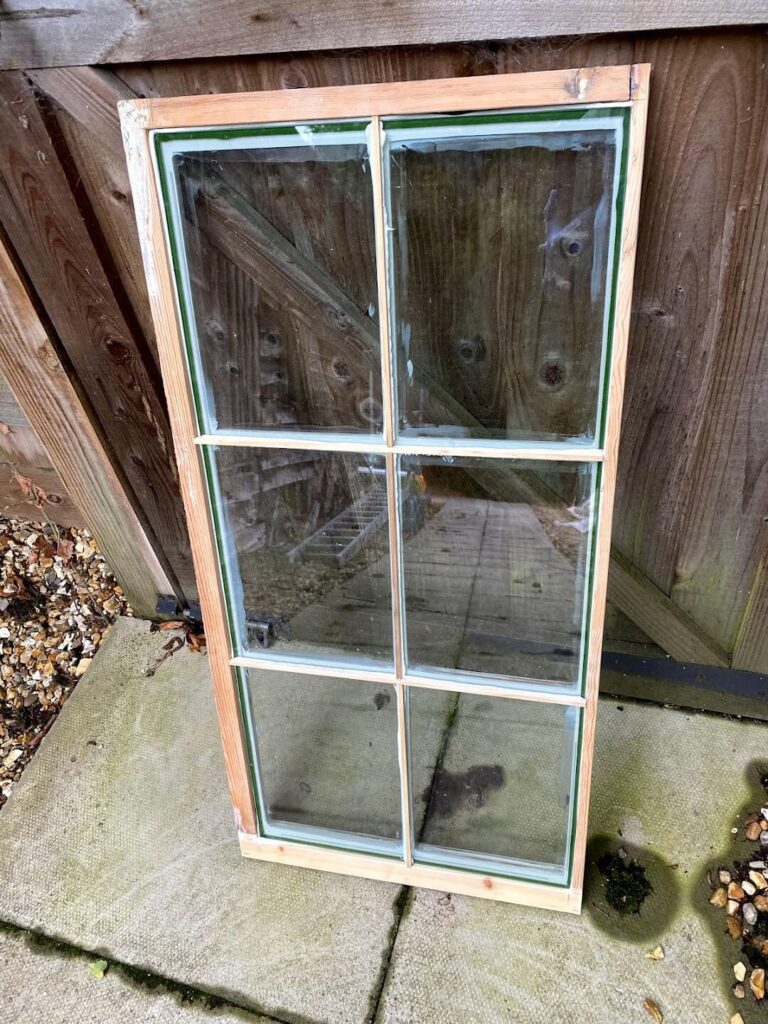
We believe that double glazing your windows is the best insulation method in the long term. Yes, it’s the most expensive option on this list, but the benefits are well worth it. You will never need to replace your windows with bubble wrap, blinds or tapes. The double-glazed sash windows will also help keep your home cool in the summer and warm in winter.
To insulate your windows properly, double glazing is the best option. If you think your windows can’t be double glazed, think again.
Many of Chameleon’s customers have thought the same, yet, we do the window work other companies say is impossible. So, if you really want an insulation solution that will work year after year, get in touch with Chameleon today and find out more about our double glazing and draught-proofing services.
It is best to insulate your windows before the cold weather begins. It can be very difficult to tell which of your windows need to be protected during this time. Still, the smoke test above is a good way of identifying which windows will likely need to be insulated.
Yes, it can. If you insulate your windows, even with the short-term solutions, you may not need to turn your heating on as much as usual, saving you some money and making your home more energy-efficient. Double glazing can save you a ton of money, though. You only need to run your heating for a short period to feel its benefits, and the double glazing will lock the heat in your home for much longer as well. So, insulating your windows is a great way of saving money. The more insulating you do, the more your wallet will benefit.
The short-term insulation methods above are perfect if you’ve just moved into a period home and want to keep warm over the winter. They are also perfect if you’d prefer to wait until spring to have your windows replaced with double glazing.
However, as we said, none of these insulation methods will last more than a few months, and some can change the style of your home as well.
For us, the best insulation method is and always will be double glazing. To find out more about Chameleon and our double-glazing services for period homes, please explore our website further and speak with our surveyors today.